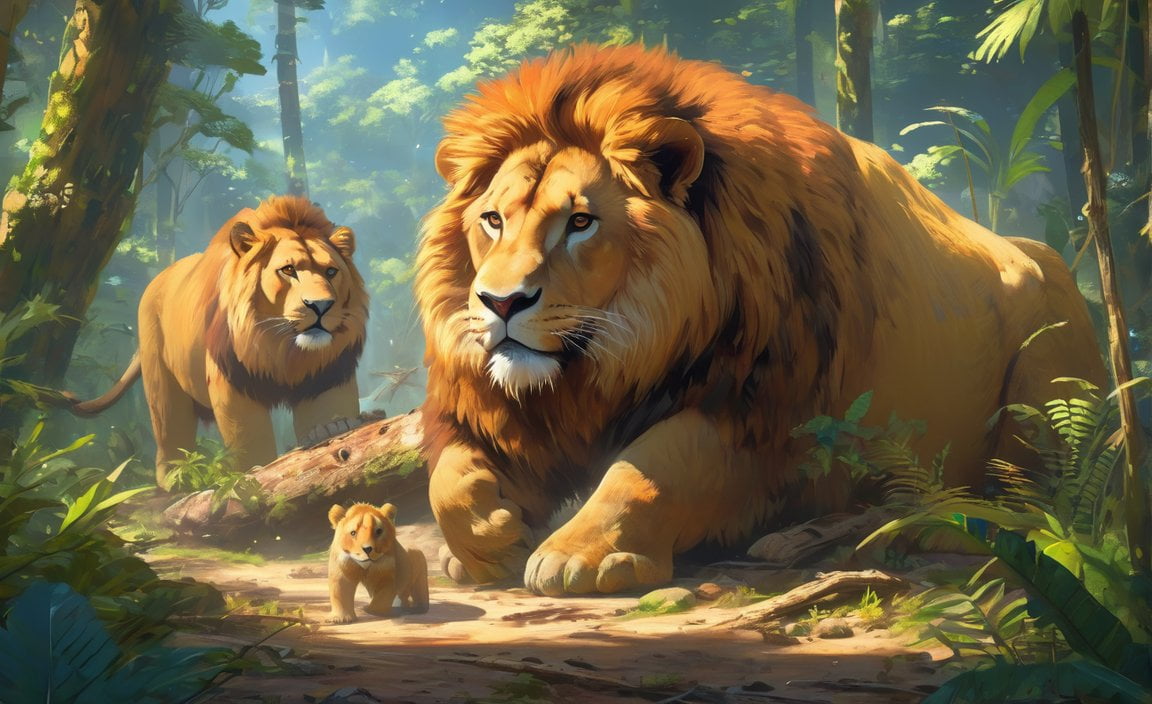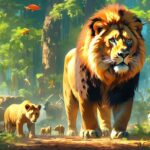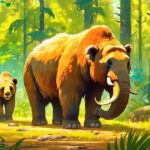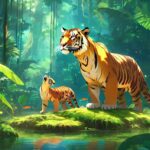Deforestation’s Toll: Wildlife Facing Extinction
The alarming consequences of deforestation on the world’s wildlife cannot be ignored any longer. As vast areas of forests continue to be cleared, animals are being pushed to the brink of extinction, their once lush habitats shrinking before our eyes. This devastating phenomenon poses a grave threat to biodiversity and the delicate ecological balance that supports our planet. In this article, we delve into the heart-wrenching impact of deforestation on endangered species, shedding light on the urgent need for sustainable land-use practices to protect our precious fauna.
Key Takeaways:
- Deforestation has had a devastating impact on various animal species, pushing many to the brink of extinction.
- Orangutans, big cats, pygmy elephants, and monarch butterflies are among the notable species greatly affected by deforestation.
- The Formosan clouded leopard, paradise parrot, St. Helena olive, Hawaiian crow, pygmy raccoon, kāmaʻo, Sumatran orangutan, and Kākāwahie are some of the species that have already gone extinct due to deforestation.
- The loss of habitats and fragmentation of forests disrupt ecosystems and threaten the delicate balance of nature.
- Immediate action, such as reforestation, creating protected areas, and adopting sustainable logging practices, is crucial to protect vulnerable species and combat the effects of deforestation.
Animals Going Extinct Due to Deforestation
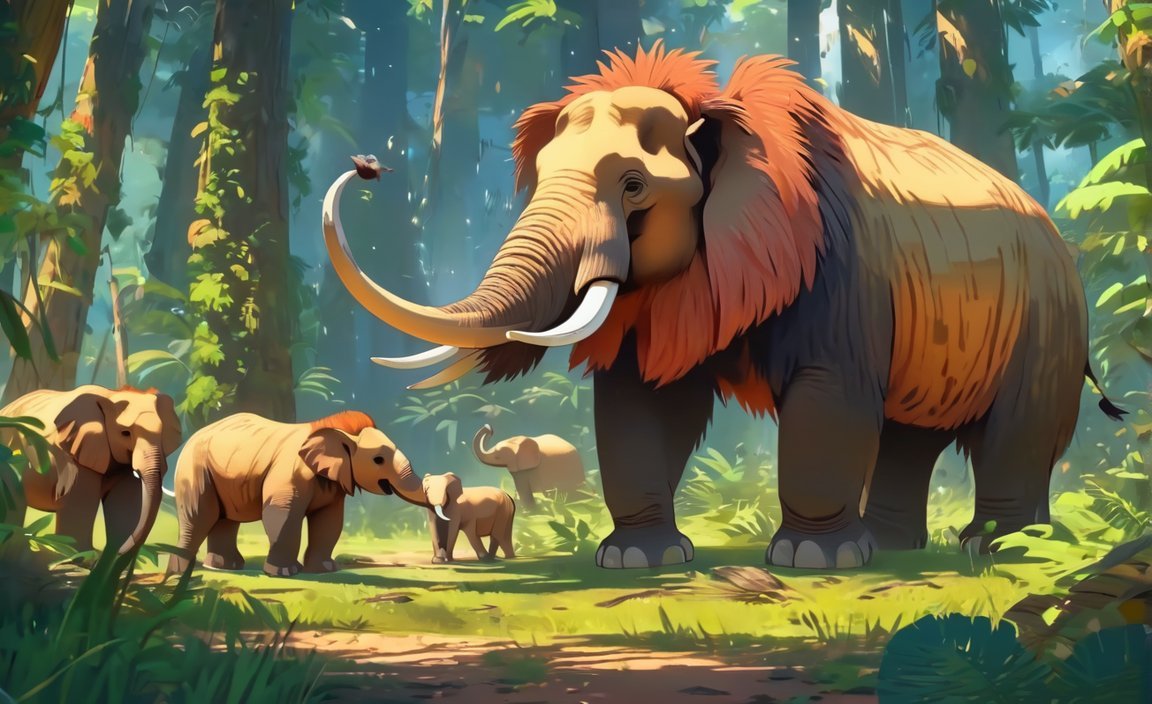
Deforestation is wreaking havoc on our planet’s animal species, pushing many to the edge of extinction. The destruction of forests and trees has had a devastating impact on their habitats, disrupting delicate ecosystems and leading to a decline in biodiversity. It’s a dire situation that demands urgent attention and action.
The Tragic Toll on Wildlife
Many iconic and vulnerable animal species have suffered greatly due to deforestation. The orangutan, a critically endangered species, has seen its population dwindle as its natural habitat in Southeast Asia disappears[^1]. Majestic big cats, such as jaguars, lions, tigers, and leopards, rely on intact forest ecosystems for their survival, making them highly vulnerable to habitat loss[^1]. Even unique creatures like the pygmy elephant and monarch butterfly have been affected, struggling to find food and mates in fragmented habitats[^1].
Extinction: The Ultimate Price
Deforestation has claimed the lives of several animal species, driving them to extinction. The Formosan clouded leopard, a distinct subspecies of the clouded leopard, has been declared extinct due to the destruction of its forested home[^2]. The paradise parrot, once a symbol of beauty, is now extinct due to the loss of its forest habitat in Australia[^2]. The sobering examples continue with the St. Helena olive, the Hawaiian crow, the pygmy raccoon, and many others[^2]. Each extinction is a devastating blow to our planet’s biodiversity and a reminder of how fragile life can be.
Understanding the Impact
Deforestation disrupts ecosystems by removing vital habitats, disrupting the balance between species, and pushing them closer to extinction. Animals that rely on forests for shelter, food, and mating face a multitude of challenges when their homes disappear. Take the Sumatran orangutan, for instance. Like its cousin in Borneo, this critically endangered species is losing its forest habitat, threatening its very existence[^2]. The same goes for the Kākāwahie, or Maui Parrotbill, which can only be found on the island of Maui, Hawaii[^2]. These animals are in a race against time, fighting for their survival.
Charting a Path Forward
To protect these vulnerable species and combat the catastrophic consequences of deforestation, immediate action is crucial. Reforestation efforts can help restore lost habitats and provide a lifeline for animal populations. Creating protected areas where animals can thrive without the threat of deforestation is another essential step. Embracing sustainable logging practices, which minimize the impact on forests, is vital for long-term preservation. In essence, all of society must recognize the immense value of forests and the importance of safeguarding them for the sake of countless animal species.
By raising awareness about the impact of deforestation on animal extinction, we can inspire others to join the fight for conservation. Let’s come together, advocate for sustainable land-use practices, and preserve the biodiversity that is crucial to our planet’s delicate ecosystems. The time to act is now, before we lose more extraordinary creatures to the devastating effects of deforestation.
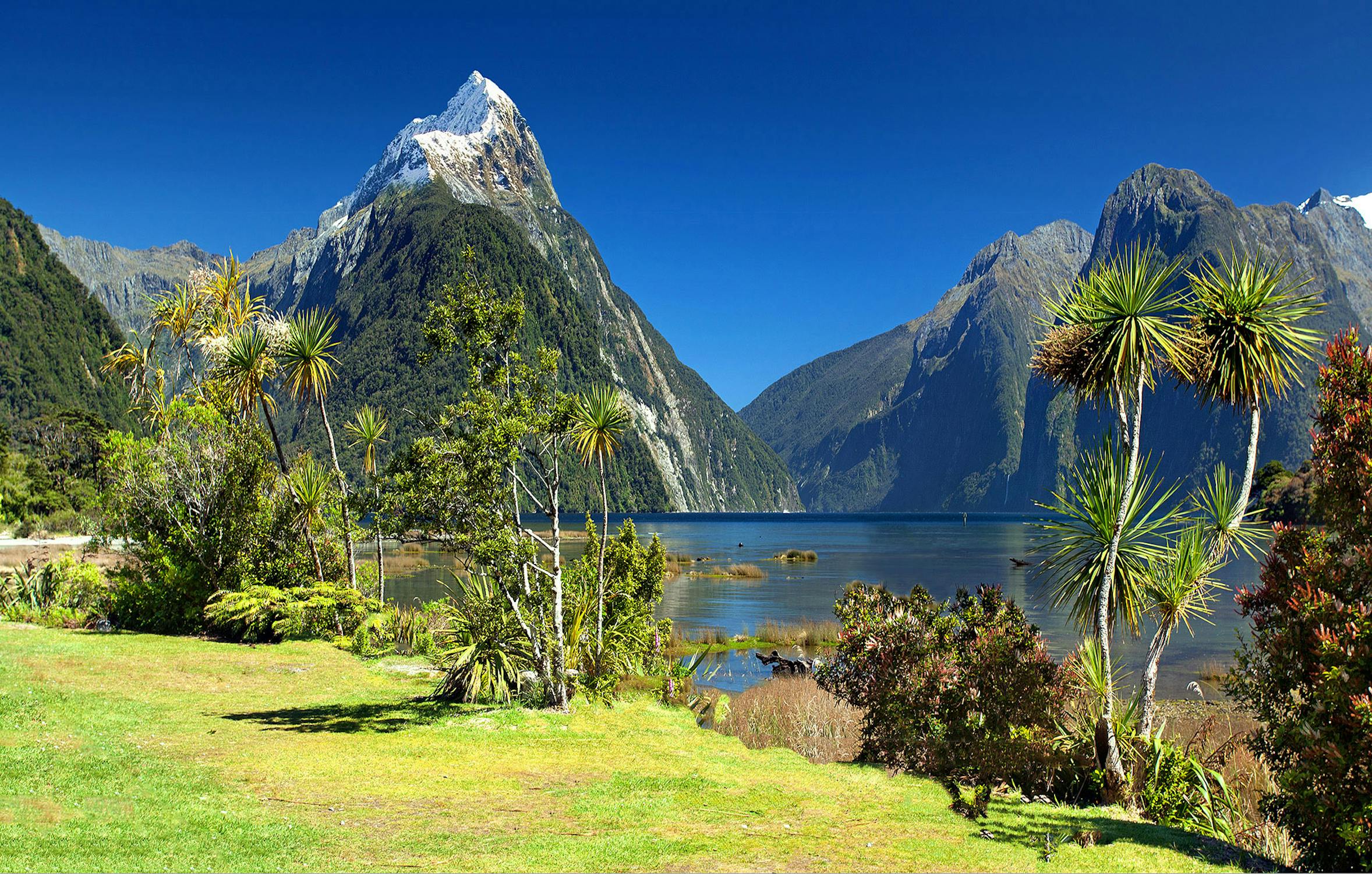
Sources:
1. Species Going Extinct Due to Deforestation: 5 Examples
2. 13 Animals That Have Gone Extinct Due to Deforestation
Animals in the Amazon rainforest are facing the threat of extinction due to deforestation. Click here to learn more about the impact of animal extinction in the Amazon rainforest. animal extinction in the amazon rainforest
Deforestation is causing a decline in animal populations, leading to the possibility of their extinction. Discover the alarming consequences of animals becoming extinct due to deforestation. animals becoming extinct due to deforestation
The Amazon rainforest is home to various species that are at risk of going extinct. Explore the factors and consequences of animals going extinct in the Amazon rainforest. animals going extinct in the Amazon rainforest
The devastating effects of deforestation have resulted in several animal species becoming extinct. Find out more about the animals that have gone extinct due to deforestation. animals that have gone extinct due to deforestation
The destruction of forests has caused the loss of many animal species. Uncover the reasons behind animals that went extinct because of deforestation. animals that went extinct because of deforestation
Deforestation’s Toll: Wildlife Facing Extinction
Big Cats
Big cats, including jaguars, lions, tigers, and leopards, are among the majestic creatures in our natural world that are facing the devastating consequences of deforestation. As their habitats are destroyed, these magnificent animals are pushed closer to the brink of extinction (source).
Pygmy Elephants
In the lush forests of Borneo, adorable pygmy elephants once roamed freely. However, deforestation has drastically reduced their habitat, placing them in grave danger of disappearing from our planet forever (source).
Monarch Butterflies
The fluttering beauty of monarch butterflies has captured the hearts of many, but sadly, their population is declining due to deforestation. With their breeding and feeding grounds destroyed, these delicate creatures struggle to survive in a world without forests (source).
Extinction Due to Deforestation
The impact of deforestation on our planet’s wildlife cannot be underestimated. Thousands of animal species face extinction each year as their habitats are destroyed by deforestation and other human activities. While it’s challenging to pinpoint the exact number of extinctions, the consequences are undoubtedly critical (source).
Impact on Endangered Species
Deforestation intensifies the vulnerability of endangered species, placing them in a dangerous battle for survival. Magnificent animals like orangutans, tigers, and gorillas heavily rely on forested habitats for their existence. Sadly, the destruction of their homes brings them closer to the edge of extinction (source).
Key Takeaways:
- Big cats such as jaguars, lions, tigers, and leopards are on the brink of extinction due to deforestation.
- Pygmy elephants in Borneo face the threat of extinction as their habitat is destroyed.
- The population of monarch butterflies continues to decline due to the loss of their breeding and feeding grounds.
- Thousands of animal species go extinct each year due to the devastating impacts of deforestation and other human activities.
- Endangered species like orangutans, tigers, and gorillas are particularly vulnerable to the destruction of their forest habitats.
Citations:
– “Species Going Extinct Due to Deforestation.” Ty Fine Furniture. source
– “Animals Affected by Deforestation.” Animal Vivid. source
Consequences for Biodiversity and Ecosystem Balance
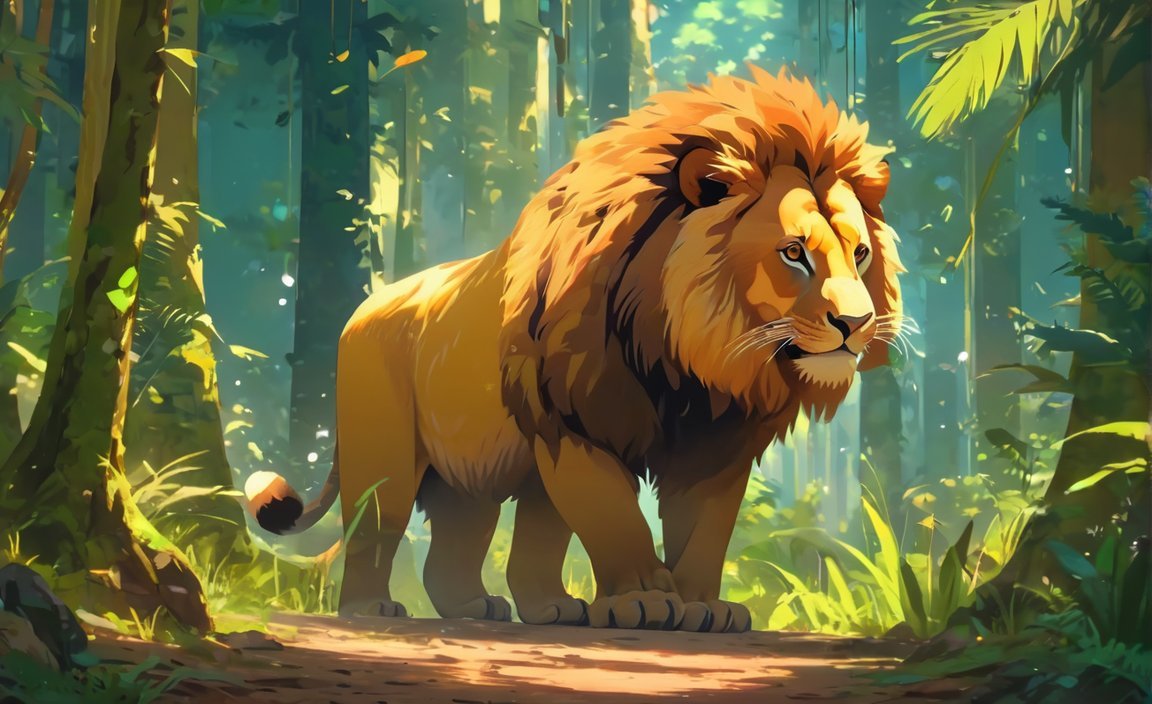
Deforestation has dire consequences for biodiversity and the delicate balance of our ecosystems. As trees are cleared and forests vanish, countless animal species face the threat of extinction. Let’s delve into the impact of deforestation on wildlife and the crucial role it plays in maintaining the equilibrium of our planet’s ecosystems.
The Devastating Impact on Wildlife
Deforestation directly contributes to biodiversity loss, as it eliminates diverse habitats and reduces the richness of species. With the destruction of forests, many animals lose their homes, food sources, and breeding grounds, pushing them closer to the edge of extinction. The consequences ripple throughout the ecosystem, disrupting intricate ecological relationships and compromising its ability to adapt to environmental changes[^1][^3].
Disruption of Ecosystem Balance
Forest loss doesn’t mean that all biodiversity disappears, but it does result in a significant shift in the mix of species that inhabit these areas. This disruption in ecosystem balance has far-reaching effects. When certain animal species decline or vanish due to deforestation, it creates a domino effect, impacting the entire food web and reducing the stability and resilience of ecosystems[^3].
The Ripple Effect on Ecosystem Services
The decrease in biodiversity caused by deforestation has long-term consequences for the stability and functioning of ecosystems. As species disappear, crucial ecosystem services like pollination, seed dispersal, and nutrient cycling are compromised[^4]. These services are vital for agricultural productivity, water purification, carbon sequestration, and maintaining a healthy environment for human societies.
Species at Risk
Countless animal species are experiencing the devastating consequences of deforestation. Among them are charismatic creatures like orangutans, tigers, and gorillas, whose survival hinges on the preservation of their forest habitats[^5]. But it’s not just these iconic species; many others, such as pygmy elephants, jaguars, and monarch butterflies, are also profoundly affected by habitat loss due to deforestation[^2].
Causes of Deforestation
The main drivers of deforestation include logging for timber and the clearing of forests for agriculture and grazing. These human activities pave the way for habitat destruction on a large scale[^6]. Additionally, wildfires, often sparked by human activities or exacerbated by climate change, contribute significantly to deforestation and biodiversity loss[^7].
Solutions for Conservation
To mitigate the devastating impact of deforestation on wildlife, urgent action is required. Protecting endangered species and preserving their habitats should be prioritized. Some key strategies include reforestation, creating protected areas, and adopting sustainable logging practices[^6]. Government policies, international cooperation, and individual efforts are essential to ensure the survival of endangered animals and safeguard biodiversity.
Key Takeaways:
- Deforestation leads to biodiversity loss and directly threatens the survival of countless animal species.
- The disruption of ecosystem balance weakens the resilience and stability of ecosystems.
- Decrease in biodiversity impacts crucial ecosystem services.
- Iconic species like orangutans, tigers, and gorillas rely on forested habitats for survival.
- Logging, agriculture, and wildfires are the major contributors to deforestation.
- Urgent action, including reforestation and sustainable practices, is crucial for conserving wildlife and preserving biodiversity.
Sources:
– www.scaleclimateaction.org
– www.royalsociety.org
Conservation Efforts and Solutions to Mitigate the Threat
Deforestation’s Toll: Wildlife Facing Extinction
Big Cats, Pygmy Elephants, and Monarch Butterflies: At Risk of Extinction
Big Cats: Several species of big cats, including jaguars, lions, tigers, and leopards, are on the verge of extinction. Powerful and majestic, these animals face significant threats due to deforestation (source).
Pygmy Elephants: The Borneo pygmy elephants, unique for their smaller size, are in grave danger due to deforestation in their habitats. Unless we take action, they may disappear forever (source).
Monarch Butterflies: Deforestation poses a severe threat to the beloved monarch butterflies. Loss of breeding and feeding grounds has led to a decline in their populations (source).
The Dire Consequences of Deforestation
Deforestation has devastated numerous animal species and pushed them to the brink of extinction. Exact figures are hard to determine, but it is alarming to know that thousands of animals are lost each year due to deforestation and other human activities (source).
This destruction intensifies the vulnerability of endangered species, such as orangutans, tigers, and gorillas. These magnificent creatures rely on forested habitats for their survival. Unfortunately, the destruction of their homes further jeopardizes their chances of survival (source).
The Importance of Biodiversity and Ecosystem Stability
Biodiversity is crucial for the health and livelihoods of our planet’s population. The delicate ecological balance is disrupted when forests are lost, leading to the loss of diverse habitats and reduction in species richness (source).
The extinction of species not only disrupts intricate ecological relationships but also weakens ecosystems’ ability to adapt to environmental changes. The consequences are far-reaching, impacting ecosystem stability, resilience, and the services they provide to human societies (source).
Halting Deforestation: Conservation Efforts and Solutions
To combat the threat of deforestation and protect endangered animals, a range of conservation efforts and solutions must be implemented.
1. Creation of Protected Areas
Establishing protected areas is a crucial step in safeguarding vulnerable species. Governments and organizations must allocate land for reserves and national parks to ensure the survival of endangered animals. However, it’s essential to note that protected areas currently cover only a small fraction of primate species’ populations (source).
2. Sustainable Land-Use Practices
Adopting sustainable logging practices is vital to minimize the impact of deforestation on animal habitats. Governments and industries should prioritize sustainable land-use practices, such as selective logging and reforestation, to ensure the long-term survival of endangered species and promote ecosystem restoration (source).
3. Raising Awareness and Advocacy
Raising awareness about the detrimental effects of deforestation is key to inspire action and conservation efforts. Through education and advocacy, we can mobilize individuals, communities, and governments to prioritize conservation and protect endangered species.
Key Takeaways:
- Big cats, pygmy elephants, and monarch butterflies are highly endangered due to deforestation.
- Deforestation disrupts biodiversity, ecosystem stability, and resilience.
- Protected areas and sustainable land-use practices are crucial for safeguarding endangered animals.
- Raising awareness and advocacy are essential for conservation efforts.
Sources:
– World Wildlife Fund
– Springer
FAQ
Q1: How does deforestation contribute to the extinction of animal species?
A1: Deforestation leads to habitat loss, which pushes many animal species to the brink of extinction. The destruction of their natural habitats deprives animals of their food sources, mates, and shelter, resulting in declining populations and, in some cases, extinction.
Q2: Which animal species are most affected by deforestation?
A2: Several animal species are highly impacted by deforestation. Some notable examples include orangutans, big cats (such as jaguars, lions, tigers, and leopards), pygmy elephants, monarch butterflies, and various bird species like the Formosan clouded leopard, paradise parrot, St. Helena olive, Hawaiian crow, and pygmy raccoon.
Q3: How does deforestation affect big cats, such as jaguars and tigers?
A3: Big cats rely on intact forest ecosystems for their survival. Deforestation destroys their habitats, disrupting their hunting grounds, mating patterns, and overall ecosystem balance. As a result, populations of big cat species, including jaguars, tigers, and leopards, have significantly declined and face the risk of extinction.
Q4: Are there any efforts to protect endangered animal species from deforestation?
A4: Yes, there are ongoing efforts to protect endangered animal species from deforestation. These efforts include creating protected areas, implementing sustainable logging practices, promoting reforestation, and raising awareness about the importance of preserving habitats. Conservation organizations, governments, and local communities play a crucial role in these conservation efforts.
Q5: What can individuals do to help mitigate the impact of deforestation on endangered animals?
A5: Individuals can contribute to the protection of endangered animals and the prevention of deforestation by supporting organizations involved in conservation efforts, advocating for sustainable land-use practices, reducing consumption of products linked to deforestation (such as palm oil), and raising awareness among their communities about the importance of preserving wildlife habitats. Small actions collectively make a significant difference in safeguarding endangered species and preserving biodiversity.
